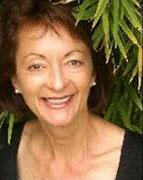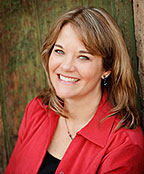eng Shui, the ancient Chinese art of placement dates back to before the Bronze Age, but the techniques and philosophies behind it still work today. Considered an art and science, Feng Shui goes beyond decorating a space to make it look good, it is meant to create harmony in your surroundings and ultimately in your life.
It wasn’t until the late 20th Century that Feng Shui found its way across the ocean to land here in the West. In the book Feng Shui With What You Have: Maximum Harmony, Minimum Effort, authors Connie Spruill and Sylvia Watson say, “Even though Feng Shui has changed throughout the ages, traveling from East to West, the basic premise remains as relevant today as it was in ancient times: use nature as a guide to create environments where you feel balanced, inspired and nurtured.”
As writers, it is important to have a space that allows the words to flow and Feng Shui can help accomplish that. The good news is that it doesn’t have to cost a lot and can be done with items you already have in your home. This article will share simple ways you can implement Feng Shui into your writing space, making it a place that encourages creativity, inspiration, and success.
When looking at your own writing space, one of the first things all the experts believe you should do is get rid of the clutter: all those extra things you have laying around that don’t serve a purpose. By doing this, you open up the Chi—the invisible life force or energy that is in and around our bodies and our environment. We experience Chi through our five senses, what we see, hear, feel, smell, and taste. Too much clutter stops the flow of Chi and can make us feel stuck and stressed.

“Having a Feng-Shui-friendly space is not about being immaculate, it is about having a space that doesn’t irritate, confuse, or overwhelm you.”
Once you declutter, you can begin creating a writing space that works for you. If you are a piler, give yourself lots of horizontal space and if you are a filer, have lots of vertical space. Terah Kathryn Collins, founder of the Western School of Feng Shui, points out that having a Feng-Shui-friendly space is not about being immaculate, it is about having a space that doesn’t irritate, confuse, or overwhelm you.
Spruill and Watson also add that you should have appropriate lighting, an ergonomically comfortable chair, and a window or picture that provides you with a depth of view that you can turn to exercise your eyes regularly.
When positioning your desk, you should not have your back to the door. If there is no way to avoid this, add a mirror so you can see the entrance.
You also want your space to be unique to you. Collins says, “Writers are intuitive creative people who work from the inside out. Setting up your writing space should be no different—you should do it from the inside out.”

“Writers are intuitive creative people who work from the inside out. Setting up your writing space should be no different—you should do it from the inside out.”
(Photo: Terah Kathryn Collins)
She encourages writers to set up their room first, personalizing the space with art, photographs. and objects that are meaningful and inspire creativity. Then step back and examine the Feng Shui of the space. Does it flow? Does it have too much or too little of an element? Does anything need to be moved?
At this point, you can even use a bagua map to help focus attention on the areas that correspond with your goals in life (self/career, wisdom/knowledge, future/fame...). The room is divided into eight sections. The bagua is a template that can help you determine where those areas are in your writing room and how to enhance each one with a variety of objects, colors, and scents.
You will also want to keep in mind the Yin/Yang energy in your writing space. The concept of Yin/Yang, or opposites, is an important aspect of Feng Shui: light/dark, male/female, loud/soft. Together, these complimentary forces make a whole and one cannot exist without the other. Spruill and Watson describe Yin energy as dark, quiet, still and small, and Yang energy as light, with sound, active and big. When you have a good balance between both of these, the environment will feel comfortable and harmonious.
Drawing on Aromatherapy and the sense of smell when we write can be a powerful tool. Spruill and Watson recommend using Rosemary for recall and memory, and Jasmine or any citrus for alertness and productivity. Keep in mind that aromatherapy use depends on culture and background of the person.

“Electronics like your computer generate electromagnetic fields that can reach as far as thirty inches. You can use plants to minimize the effects.”
Here are some other enhancements you can use in your office:
- Have a vase full of yellow and some bright orange flowers. The orange can help with connectivity to new plots while the yellow, based on intensity, can promote investigation. The brighter the yellow, the more clarity it brings.
- Include a water element like fountain or flowing water sound effects, (very lightly in background), as wood, the creator cannot survive without water for nourishment.
- Electronics that use a sudden boost of energy to run (printer, fax machine, copier) can be draining to us. Don’t have this type of equipment too close to your creative workspace. Plants can be used to minimize the effects of the electromagnetic fields.
- Hang a wooden chime in your window. The movement activates stagnant chi and stimulates your money-making potential. Wood is the symbol of growth.
- Electronics like your computer generate electromagnetic fields that can reach as far as thirty inches. Once again, you can use plants to minimize the effects.
- Boost the south wall of your office for fame and recognition. Place articles sold, awards you have won, diplomas, pictures or letters from famous people on your south wall.

“For me, an effective space is a quiet place that I find peaceful...no demands on my time, minimal distractions and natural comfort.”
(Photo of Dr. Jill Bolte Taylor by Katherine Domingo)
The five elements, fire, water, wood, earth, and metal, give us the tangible aspects of Feng Shui. Each is unique and has specific colors, textures, shapes, and objects associated with it that bring out the essence of each one. Fire and water are seen as catalysts. Wood, earth, and metal are content elements. Although each is used for a different purpose, it is important to remember that how these elements are combined and interact with each other is what makes a space feel welcoming or forbidding.
Earth
Colors: brown, yellow, beige, peach
Shape: square
Materials: brick, stone, ceramic
Objects: pottery, tile, rocks, sand, plaid fabric, masonry, marble
Fire
Colors: red, orange
Shape: triangle
Material: electricity
Objects: lamps, candles, computer, fireplace; artwork with the color red or depicting pyramids, obelisks, spires; animal prints
Dr. Jill Bolte Taylor, author of My Stroke of Insight, writes in front of a fireplace in the winter or in her sunroom when it is warmer. She incorporates the elements of fire and wood depending on the season. “I have a great view of the outdoors—woods. I enjoy the natural quietness of these spaces. For me, an effective space is a quiet place that I find peaceful...no demands on my time, minimal distractions and natural comfort.”
Water
Colors: black, dark blue
Shape: wavy
Material: glass
Objects: water features, aquarium, fabric with wavy patterns, mirrors; artwork depicting a water scene
Karen Quinn, author of Testing For Kindergarten and Ivy Chronicles has an office in her apartment. A key element in her environment is water. “I love being in this space because I’m surrounded by things I love—paintings I’ve made myself, books, my favorite oriental rug, a view of the ocean, and my two cats are always sitting at my feet.”
Wood
Colors: green, blue
Shape: rectangle
Materials: wood, paper
Objects: plants, wood items, books, fabric with stripes, silk; artwork depicting landscapes, plants or flowers
Sandra Dallas, author of Whiter Than Snow, Prayers For Sale, and Tall Grass converted a covered porch into a private space overlooking her back yard. She incorporates many wood elements in her space from the view to the books. “I love—Indian rugs, folk art, floor-to-ceiling bookshelves, a rolltop desk, an antique pie safe that holds files, my awards. When I’m writing, I usually prop up antique pictures of people who look like my characters or odds and ends that I plan to include in the book.”
Metal
Colors: white, gray, silver
Shape: round
Material: metal
Objects: metal items, coins, metallic finishes, fabric with circles or metal sheens, rounded arches
Laura Resau has her “sweet little fifties rig,” a 10-foot aluminum trailer parked in her driveway that she uses as her office. The whole structure is metal, but Resau has done a great job incorporating all the elements on the inside of her writing space. “It’s filled with things that are meaningful or inspiring to me—photos and pictures and quotes hanging on the walls, a string of lights, pillows, special rocks, and candles on the table where I write.” (Click here to tour her trailer.)
The Tao, an Eastern philosophy, states that everything is connected, and in order to be happy, we must live in harmony with nature, our surroundings, and the people around us. By making adjustments to our physical environment, we can get rid of unnecessary obstacles in our way and clear our pathway toward writing success and happiness.
Sources:
Connie Spruill and Sylvia Watson, Feng Shui With What You Have, 2004
Skye Alexander, 10-Minute Feng Shui, 2002
Western School of Feng Shui, https://www.westernschooloffengshui.com/
Feng Shui Institute of America: https://www.windwater.com/
Red Lotus Consulting, https://www.redlotusconsulting.com
***

Kerrie Flanagan is the Director of Northern Colorado Writers (NCW) and a freelance writer with over 125 articles published in national and regional publications.
(Photo of Kerrie by Desiree Suchy.)
-----
Enjoyed this article? Check out these related articles on WOW!:
Photo Essay: Office-ially Fed Up! One Writer's Home Office Makeover
Create the Space You Deserve: Interview with Jill Butler
How To Create Your Unique Workspace
10 Tips to Feng Shui Your Office